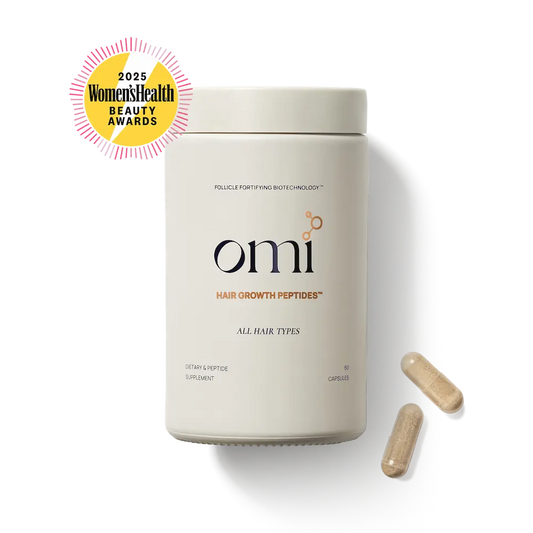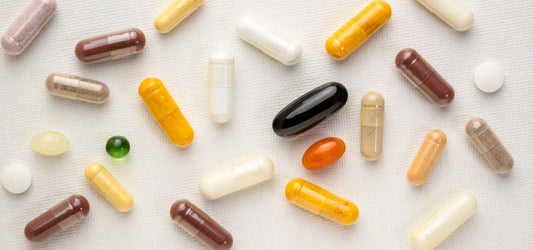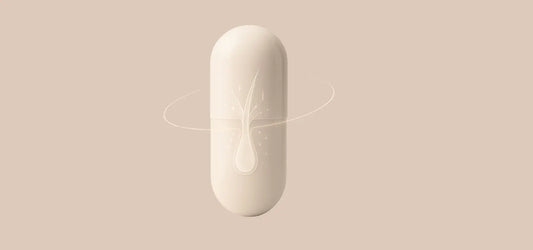Hair & Follicle Health During Pregnancy and Breastfeeding

SHOP this article
OMI
Hair Growth Peptides Capsules
Promote stronger hair growth and scalp health with our unique peptide formula.
Pregnancy and breastfeeding are unique and beautiful chapters in a woman’s life, yet they can bring surprising changes to your body, including your hair. For many women, hair becomes thinner, weaker, or sheds more during this time, especially between 2 and 4 months postpartum. OMI Hair Growth Peptides were designed to nourish your hair follicles from the inside out, offering one of the best formulas for hair growth that’s safe during this time. As one of the top-rated hair growth products and supplements, OMI helps restore strength and resilience at the root.
Let’s walk through why these changes occur and how each of the ingredients supports your hair health so you can feel confident and informed. With any new supplement or vitamin, please discuss with your healthcare provider before starting something new. This information is not medical advice but educational content.
Why Hair Changes After Birth
During pregnancy, high levels of estrogen prolong the growth phase (anagen) of hair. This means many women experience thicker, fuller hair while pregnant because fewer hairs are falling out.
After birth, estrogen levels rapidly drop, causing many hairs that were "stuck" in the growth phase to shift into the shedding phase (telogen) all at once. This is known as telogen effluvium, and it's a normal, temporary condition often contributing to hair loss in women.
Month 0–2: Nothing Seems Different (Yet)
Right after your baby is born, your body is still adjusting. Most women don’t notice any major changes in their hair during the first few weeks. You may even still feel like your hair is full and thick, just like it was during pregnancy.
Month 2–4: The Shedding Begins
This is when many new moms start to see real changes. You might notice more hair coming out when you brush, wash, or run your hands through your hair. This shedding is completely normal; it's called postpartum hair loss and it happens because your hormone levels (especially estrogen) are returning to pre-pregnancy levels. This causes a lot of hair that was “resting” during pregnancy to fall out all at once.
Month 4–6: Shedding Slows Down
For most women, hair loss peaks by month four or five, then starts to slow down. You may still notice thinner areas, especially around your hairline or temples, but things are starting to improve.
Month 6–12: Hair Regrowth
By now, the shedding has usually stopped, and new baby hairs start to grow in. You might see fine little hairs along your forehead or scalp - this is a great sign! Most women find that their hair begins to feel fuller and stronger again over the next several months.
After 12 Months: Back to Normal
By your baby’s first birthday, your hair should look and feel a lot more like it did before pregnancy. For some women, the texture or thickness might be a little different, but overall, your hair is on its way back to balance.
The Key to Prevention: Anchored Follicles
Minimizing postpartum hair loss starts with keeping hair follicles anchored and resilient, even as your hormones fluctuate. Each ingredient in OMI Hair Growth Peptides is carefully chosen to support this process from within, helping to nourish the root, reinforce the follicle, and promote healthy, sustained hair growth during this sensitive time.
Key Ingredients in OMI Hair Growth Peptides
IFP Hair Growth Peptides™ (Keratin Peptides)
These peptides are broken-down keratin proteins, tiny, bioavailable building blocks that help strengthen your hair from the inside out. Your body naturally makes keratin, so these peptides simply supply extra support during a time of high demand.
- Safety: Non-hormonal, non-toxic, and naturally derived. While not specifically studied in pregnant women, keratin peptides are generally recognized as safe.
- Pregnancy Note: Always consult with your OB-GYN before introducing new supplements.
Niacinamide (Vitamin B3)
Supports circulation to the scalp and helps nourish hair follicles with oxygen and nutrients.
- Safety: Safe during pregnancy and breastfeeding, commonly found in prenatal supplements.
- Function: Supports skin health, blood flow, and energy metabolism.
Pantothenic Acid (Vitamin B5)
Helps with the production of energy at the cellular level and supports stronger, more elastic hair.
- Safety: Water-soluble and non-toxic, safe during pregnancy and lactation.
- Fun fact: Often used in hair care products for shine and flexibility.
Pyridoxine (Vitamin B6)
Regulates hormones and supports protein metabolism, important for growing strong hair.
Biotin (Vitamin B7)
Helps maintain keratin structure for strong hair, skin, and nails.
Zinc
Regulates oil production and supports scalp health.
Copper
Supports collagen formation, tissue repair, and works with zinc for mineral balance.
Sodium (34 mg)
Trace amount helps stabilize the formula, safe and negligible.
Final Thoughts
Each ingredient in OMI Hair Growth Peptides plays a crucial role in follicle health and is included at gentle, clinically researched levels. These are some of the best vitamins for hair growth, all safe for use during pregnancy and breastfeeding. Whether you're concerned about postpartum hair loss or looking to strengthen hair, OMI offers an advanced solution to support you every step of the way.
Your hair deserves the same love and care you’re giving to the rest of your body during this transformative time. OMI is here to support you, safely.









